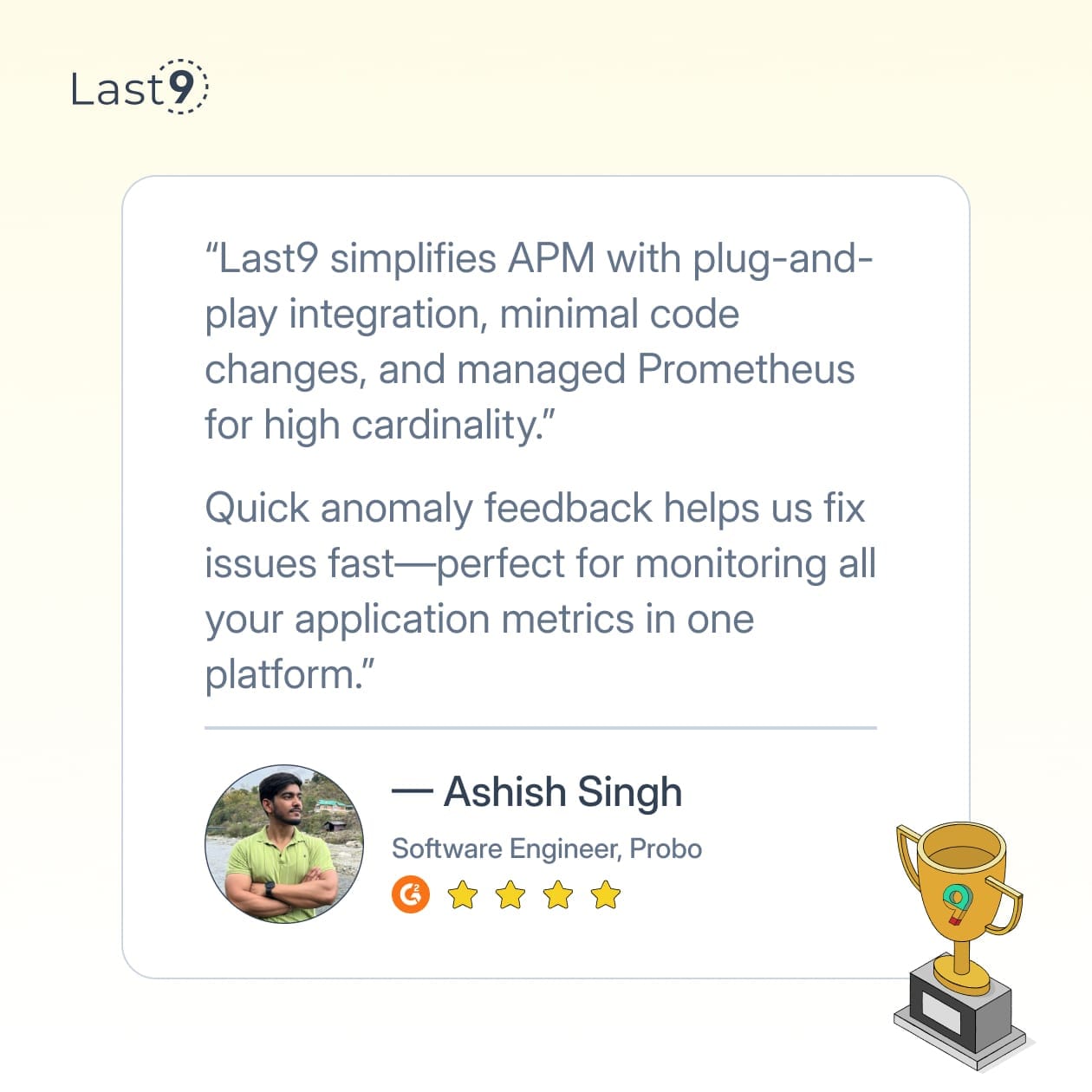Keeping systems healthy isn’t just a nice-to-have anymore—it’s a necessity. As teams grow and architectures evolve, the need for solid monitoring and observability becomes more pressing. The ELK Stack (Elasticsearch, Logstash, and Kibana) has long been a go-to solution, but its complexity and resource demands are pushing many teams to explore alternatives.
In this guide, we look at some of the best ELK alternatives out there—tools that offer similar (or better) capabilities without the heavy lift.
Why Consider ELK Alternatives?
The ELK Stack offers powerful log management and analysis capabilities, but it comes with several challenges:
- Resource-intensive: Elasticsearch demands significant memory and CPU, especially at scale
- Setup complexity: Configuration requires specialized knowledge and ongoing maintenance
- Cost concerns: Hardware requirements and potential licensing costs add up quickly
- Scaling headaches: Maintaining performance while growing can be tricky without expertise
For many teams, these drawbacks outweigh the benefits, making it worth exploring other options that offer similar capabilities with fewer hassles.
ELK Alternatives: A Comparison Overview
Before jumping into details, here's a quick comparison of the top ELK alternatives to help you navigate your options:
| Tool | Best For | Pricing Model | Setup Complexity | Resource Requirements |
|---|---|---|---|---|
| Last9 | Teams needing unified observability with predictable costs | Event-based | Low (managed service) | Low (managed) |
| Grafana Loki | Organizations already using Grafana/Prometheus | Volume-based with compression | Medium | Low |
| Graylog | Enterprise compliance and security needs | Tiered (open-source + enterprise) | Medium | Medium |
| Fluentd + ClickHouse | High-volume log analytics | Component-based | High | Medium (but highly efficient) |
| OpenSearch | Teams transitioning from ELK with minimal changes | Resource-based | Medium-High | High |
| Timber.io Vector | Resource-constrained environments | Open-source | Low | Very Low |
| Grafana Mimir | Massive-scale metric storage | Volume-based | Medium | Medium-High |
Top 7 ELK Alternatives for DevOps Teams
1. Last9: Managed Observability with Predictable Pricing
If you're hunting for an observability solution that won't wreck your budget while delivering enterprise-grade performance, Last9 deserves your attention.
What makes Last9 particularly valuable for DevOps teams is its high-cardinality observability at scale, proven by monitoring some of the largest live-streaming events in history.
We unify metrics, logs, and traces while integrating smoothly with OpenTelemetry and Prometheus, giving you correlated monitoring and alerting that shows relationships between system components.
Our event-based pricing model makes costs predictable even as your infrastructure grows. Instead of worrying about data volume surprises at the end of the month, you pay based on events ingested – a refreshingly transparent approach.
Key strengths:
- Real-time insights with correlation across metrics, logs, and traces
- Native OpenTelemetry and Prometheus integration
- High-cardinality observability without the performance hit
- Predictable pricing based on events rather than data volume

2. Grafana Loki: Log Aggregation Without the Resource Hunger
Grafana Loki takes a clever approach to log management that addresses one of ELK's biggest pain points: resource consumption. Instead of indexing the full content of logs, Loki only indexes metadata and stores compressed, unindexed logs separately. This design dramatically reduces resource requirements while still enabling powerful querying.
For DevOps teams already using Prometheus and Grafana for metrics, Loki slots in perfectly to add logging capabilities using the same query language (LogQL) and visualization tools you already know.
Key strengths:
- Much lower resource requirements than Elasticsearch
- Integrates seamlessly with existing Grafana/Prometheus setups
- Cost-effective for high-volume logging
- Simple deployment with minimal configuration
- Uses the same label-based approach as Prometheus
3. Graylog: When You Need Enterprise Features Without Enterprise Complexity
Graylog offers a compelling middle ground for teams that need enterprise capabilities but want to avoid the overhead of ELK. With powerful log processing, analysis, and alerting features, Graylog handles everything from compliance requirements to security monitoring.
What sets Graylog apart is its ability to scale horizontally while maintaining a straightforward architecture. The open-source version provides robust functionality, while the enterprise offering adds features like audit logging and advanced user permissions.
Key strengths:
- Intuitive web interface with customizable dashboards
- Powerful search capabilities
- Content packs for quick integration with common data sources
- Strong access control for enterprise environments
- Built-in processing pipelines for data transformation
4. OpenSearch: The Open-Source Elasticsearch Fork
When Amazon Web Services forked Elasticsearch following Elastic's license changes, OpenSearch was born. This fully open-source alternative provides the familiar functionality of Elasticsearch and Kibana while maintaining Apache 2.0 licensing.
For teams already familiar with ELK, OpenSearch offers the smoothest transition path with a minimal learning curve. It maintains compatibility with most Elasticsearch APIs, making migration relatively straightforward compared to other alternatives.
Key strengths:
- Familiar interface and query syntax for ELK users
- Strong community development and AWS backing
- Full-text search capabilities
- Visualization through OpenSearch Dashboards
- Distributed architecture for horizontal scaling
5. Fluentd + ClickHouse: The Performance Powerhouse Combo
For teams handling massive log volumes where query performance is critical, the combination of Fluentd for collection and ClickHouse for storage offers impressive results.
Fluentd efficiently gathers and routes logs from various sources, while ClickHouse—a column-oriented database—provides blazing-fast analytics on huge datasets. This pairing can process and query terabytes of logs with response times measured in milliseconds rather than seconds.
Key strengths:
- Exceptional query performance on large datasets
- Highly efficient storage (10-100x compression compared to row-based DBs)
- Flexible schema with support for nested data structures
- SQL interface for analytics
- Lower hardware requirements than Elasticsearch
6. Timber.io Vector: High-Performance Log & Metrics Router
Vector, developed by Timber.io and now a CNCF project, has emerged as a powerful component for observability pipelines. This blazing-fast tool collects, transforms, and routes logs and metrics with impressive efficiency gains over traditional solutions.
What sets Vector apart is its unified approach to handling both logs and metrics while using significantly fewer resources than alternatives. Its rust-based architecture delivers exceptional performance, making it ideal for resource-constrained environments.
Key strengths:
- Extremely resource-efficient (10x more efficient than many alternatives)
- Unified handling of logs and metrics
- Rich transformation capabilities
- Vendor-neutral with 100+ integrations
- Deployable as an agent, sidecar, or aggregator
7. Grafana Mimir: Massive-Scale Metrics Without Compromises
Grafana Mimir addresses one of the most common observability challenges: long-term storage and querying of metrics at massive scale. As an evolution of Cortex, Mimir provides horizontal scalability while maintaining high query performance even across billions of time series.
For DevOps teams handling large-scale infrastructures, Mimir offers an elegant solution to metrics storage that complements other observability tools. Its multi-tenancy support makes it particularly valuable for service providers or organizations with strict isolation requirements.
Key strengths:
- Horizontally scalable to 1 billion+ active time series
- Compatible with Prometheus query language (PromQL)
- Built-in multi-tenancy support
- Long-term storage capabilities
- Integrates seamlessly with Grafana for visualization
How to Choose the Right ELK Alternative
Selecting the best observability solution depends on your specific requirements. Here's a structured approach to finding the right fit:
Consider Your Primary Use Case
Different tools excel at different aspects of observability:
- For unified observability: Last9 provides a comprehensive platform covering metrics, logs, and traces
- For log management: Grafana Loki and Graylog offer specialized log solutions
- For metrics at scale: Grafana Mimir excels at massive-scale metrics storage
- For data routing and collection: Timber.io Vector provides efficient pipelines
Evaluate Technical Requirements
Match your infrastructure needs with the right solution:
- Scale considerations:
- Small to medium scale: Grafana Loki or Timber.io Vector provides simpler setups with good performance
- Large scale: Last9, Grafana Mimir, or the Fluentd + ClickHouse combo offer better handling of high-volume data
- Integration with existing tools:
- Already using Prometheus/Grafana: Loki and Mimir integrate seamlessly
- Kubernetes environments: OpenTelemetry-native tools like Last9 or Vector
- Legacy systems: Fluentd's extensive input plugins handle diverse sources
- ELK migration with minimal changes: OpenSearch maintains most compatibility
- Resource constraints:
- Limited CPU/memory: Loki and Vector are extremely efficient
- Flexible scaling needs: OpenSearch and Graylog offer horizontal scalability
- Managed service preference: Last9 eliminates infrastructure management
Common Pitfalls to Avoid
Watch out for these common mistakes when implementing an ELK alternative:
- Underestimating data volume: Be realistic about your logging needs and how they'll grow
- Neglecting retention policies: Set appropriate data retention periods to manage storage costs
- Missing critical alerts: Ensure all essential alerts are recreated in the new system
- Ignoring performance monitoring: Track the performance of your observability stack itself
- Failing to document: Keep thorough documentation of your setup for troubleshooting and onboarding
The Future of Observability Beyond ELK
The observability landscape continues to evolve beyond traditional logging solutions. Here are some trends shaping the future:
- OpenTelemetry standardization: The consolidation around OpenTelemetry makes switching between tools easier
- AI-powered analytics: Machine learning is improving anomaly detection and root cause analysis
- Unified observability: The lines between metrics, logs, and traces are blurring into cohesive platforms
- Cost optimization: More tools are focusing on efficient data storage and processing
- Shift-left observability: Observability is moving earlier in the development lifecycle
Join the Conversation
If you want to discuss observability strategies with fellow DevOps professionals, join our Discord Community to share experiences, ask questions, and learn from peers who've tackled similar challenges.
What ELK alternatives have you tried? We'd love to hear about your experiences in the comments below.
FAQs
What's the easiest ELK alternative to implement?
For most teams, Grafana Loki offers the simplest transition, especially if you're already using Grafana. Last9 also provides quick setup as a managed service with minimal configuration required. For teams deeply familiar with ELK, OpenSearch offers the most familiar experience.
Can I migrate from ELK gradually or do I need to switch all at once?
Gradual migration is typically the safer approach. You can start by sending logs from a subset of applications to your new solution while maintaining ELK for the rest, then gradually expand coverage.
How do query languages compare between ELK and alternatives?
Each alternative has its own query approach:
- Grafana Loki uses LogQL, which resembles Prometheus PromQL
- Graylog supports both structured and unstructured searches
- OpenSearch maintains compatibility with Elasticsearch's query DSL
- ClickHouse uses SQL, familiar to many developers
- Last9 offers a query language optimized for correlating metrics, logs, and traces
What about historical data when migrating from ELK?
Most teams opt not to migrate historical data due to the complexity. Instead, they typically:
- Keep the old ELK cluster running with read-only access for historical queries
- Start fresh with the new system
- Eventually decommission ELK after the retention period expires
Are there open-source alternatives that match ELK's capabilities?
Yes, several open-source alternatives offer comparable functionality:
- Grafana Loki + Prometheus + Tempo provides a complete open-source observability stack
- OpenSearch offers an open-source alternative with familiar ELK functionality
- Timber.io Vector provides efficient log and metrics routing
- The combination of Fluentd, ClickHouse, and Grafana creates a powerful open-source solution



